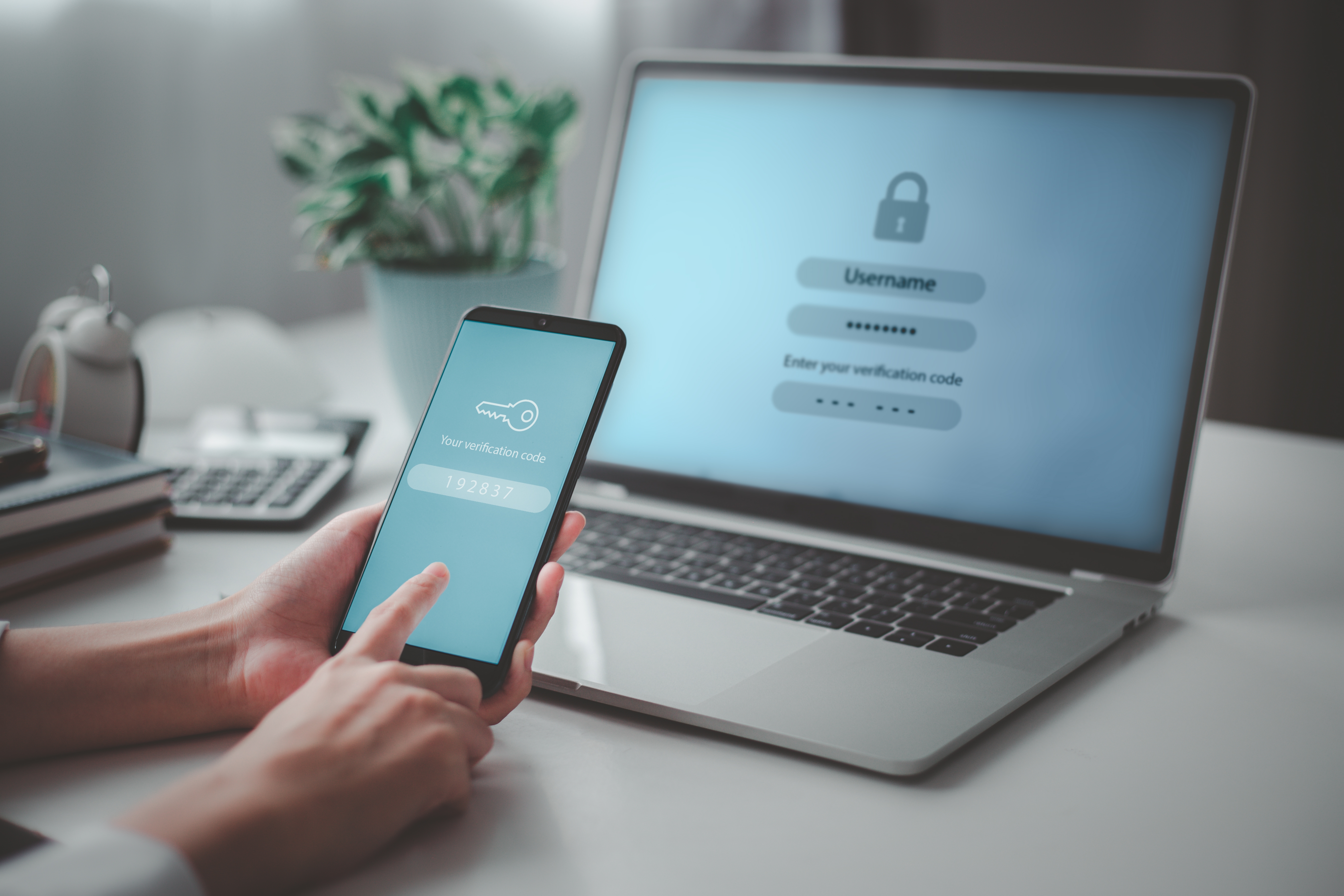Do you get overwhelmed by keeping track of all your passwords, yet simultaneously frightened at the thought of a cybersecurity breach? So much of our valuable data is online and vulnerable to cyber-attacks. Thankfully, two-factor authentication is becoming more popular as a way of verifying user identities.
Just as you want to protect you online data, it's equally important to protect your online purchases. When you subscribe to Mulberry Unlimited, you can get coverage for all your products under the same protection plan. In this article, we will review what two-factor authentication is, why it matters, and common examples you may have encountered.
What is two-factor authentication?
Two-factor authentication (also called 2FA) is a cybersecurity measure that makes a user prove their identity in two ways before gaining access to an online account like email, banking, or other private data. For example, you may encounter this when you put in your password to enter a website, and then it either texts you or emails you a temporary security code that you have to enter in order to prove it is you. Some accounts even email you when you login to make sure you can be made aware if a login happens that you aren’t aware of, indicating risk of potential hacking.
Why is two-factor authentication gaining popularity?
Cybersecurity is among the greatest risks faced by society today. Data breaches alone cost businesses millions each year, and over half of American internet users have their accounts breached annually. The proliferation of this risk shows the urgent importance of adopting updated and diligent security measures when it comes to our digital lives.
Two-factor identification is increasingly being required by many companies to help prevent data breaches and also instill trust in their user base. Because of the proliferation of mobile phones, facial recognition, and fingerprint technology associated with those devices, it has become more accessible to incorporate 2FA processes into any user experience.
Why do you need two-factor authentication?
We all need 2FA because our passwords alone do not protect us from the main risks posed online. Skilled hackers have advanced methods to bypass password steps, and thanks to 2FA we have newer tools that can help us keep our most important accounts safe.
Plus, when you know that you have 2FA turned on for your banking, emails, and other important data, you can benefit from peace of mind, not worrying that a hacker is spending the night breaking through your password wall.
Some examples that you encounter every day
If you use mobile, internet, computer, or gaming devices, you likely encounter 2FA every day. Here are a few common examples:
- Apple two factor authentication. When logging into your Apple or iCloud account, Apple has initiated an Apple ID two-factor authentication to ensure that you're the only individual who can access your account. They will typically send a code to your other device to confirm your identity.
- Fortnite 2FA. Epic Games gives the option for you to enable 2FA to ensure your gaming accounts don’t get hacked. They incentivize users not only by offering heightened security through this measure, but also by offering free game and gifting access to users who have 2FA enabled.
- Duo mobile app. This is a mobile tool by Cisco that's used by larger organizations to help them ensure that anyone logging onto their system or portal—on-site or remotely—is in fact who they say they are. This gained popularity due to the rise of remote learning, as universities required users to verify their identity on their phones before accessing coursework portals.
- Microsoft authenticator app. Similar to Apple’s 2FA, Microsoft users can use a highly-secure authenticator app to log into their accounts and devices in an effort to boost security.
Step up your product protection with Mulberry
As you work to increase the protection and security of your digital data, consider upgrading your product protection for your most important purchases using Mulberry. Subscribe to Mulberry Unlimited to get coverage for all your online purchases under the same product protection plan, for just $9.99 a month.






